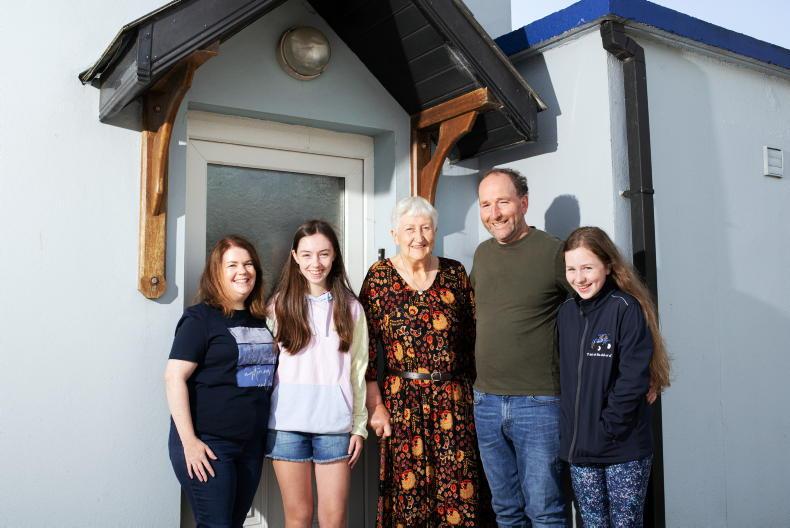Sean Deasy is the third generation farming at Timoleague in west Cork, supplying milk to Barryroe Co-op. Ironically, 100 years ago this year, Sean’s grandfather went to a farm auction to buy a plough, but instead he bought the farm. Sean’s dad took over that farm in 1960, then a mixed tillage, pigs and cattle system. Sean came home from Darra Agricultural College in 1991, started farming in his own right in 1992 and subsequently took over the management of the home farm in 1996.
In 1999, he married Fiona and they have two daughters. There is now a milking block of 28ha with about 85 cows milked during the summer. Usually, 100 cows are calved down and some young cows subsequently sold in February. When Sean took over the farm, alongside the milking cows, he had 60 bulls on bull beef finishing, as at the time keeping stock numbers for the single farm payment was all the go.
Over the last 10 years, herd size has increased from 50 to between 85 and 90 milking cows
The milk production system has also changed drastically. Back 15 years ago, this farm was a 100% autumn-calving herd. Jersey genetics were then introduced to get that famous first cross and Sean says they got an unbelievable response in terms of improved milk solids and fertility. For the last five years, it’s Friesian AI only, using the best sires for milk solids and fertility to drive decisions. Herd EBI is now an impressive €175.
Replacement heifer calves go to the contract-rearer at the end of April and return in November the following year to calve down. Most winter feed is brought in from outside farms. Over the last 10 years, herd size has increased from 50 to between 85 and 90 milking cows. Contract-rearing, contractors for machinery work and investment in a new parlour is how Sean manages the extra workload from the doubling of cow numbers.
One of the biggest investments then came in 2021, with the installation of a new 16-unit parlour
Like other farmers, the Deasys had to invest to keep up to speed with regulations. In 2002, a calf shed was built, followed in 2005 by a slatted shed. In 2007, the main slurry tank was redeveloped and new slats, new roof and a covered feeding area for 90 cows constructed. A new bulk storage tank in 2009 was followed by an extension to cubicles in 2011 and a resurfacing of the silage pit in 2012. In 2015, a new calving area and farm roadways were resurfaced and a new farm water system installed. One of the biggest investments then came in 2021, with the installation of a new 16-unit parlour with cluster flush, dumpline, auto wash and a bottom-filled bulk tank. The new parlour has taken a lot of time off the working day and Sean estimates it has reduced milking time by two and half hours per day.
Managing the reseed to eliminate docks is the challenge. Farmers like Sean have solved a lot – undoubtedly, they’ll solve this too
What sets the Deasy farm apart is the investment and measurement being carried out in the paddocks and fields. The farm is in an Agriculture Catchment Programme, which means intensive monitoring and measurement of nutrients to manage run-off and leaching. Sean has lysimeters to measure ongoing leaching and deep wells drilled to measure ground water.
Over the catchment area, Sean observes a significant reduction in chemical nitrogen usage over the last 15 years. Go back 10 years and more and more of the dairy farmers in this dairy stronghold would have been spreading at least 250kg of chemical nitrogen.
Sean reckons that it’s back to 180kg per year and less, as more and more farmers tune into the monitoring of nitrogen run-off. In new reseeds, there is a big focus on including clover (3.5kg) with Abergain and Aberchoice ryegrass. Managing the reseed to eliminate docks is the challenge. Farmers like Sean have solved a lot – undoubtedly, they’ll solve this too.
